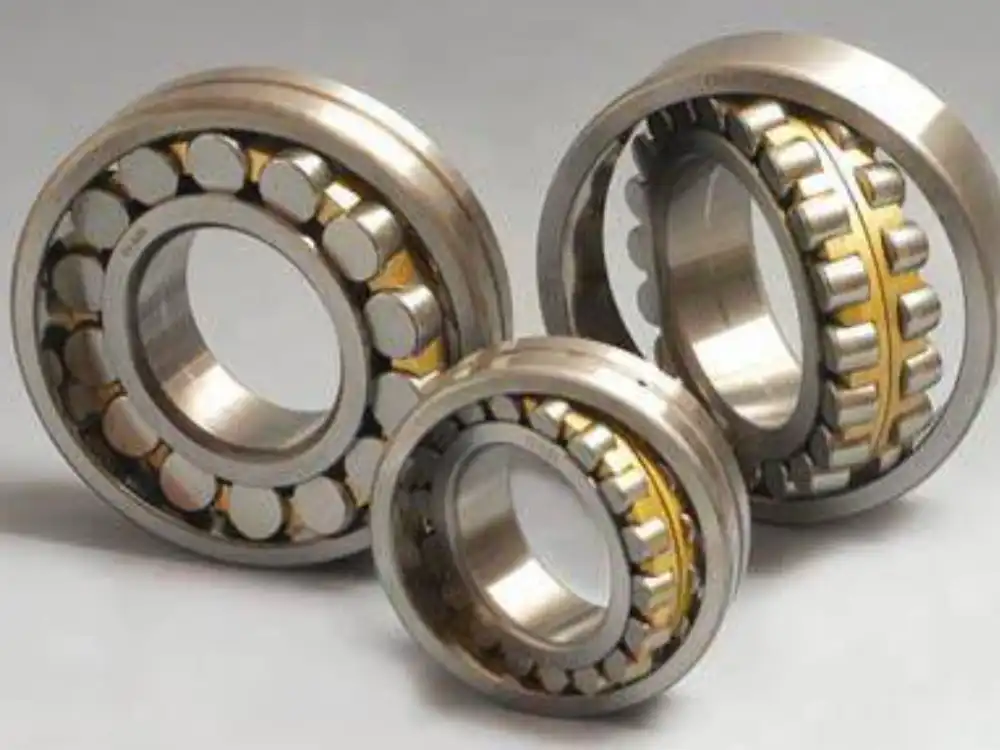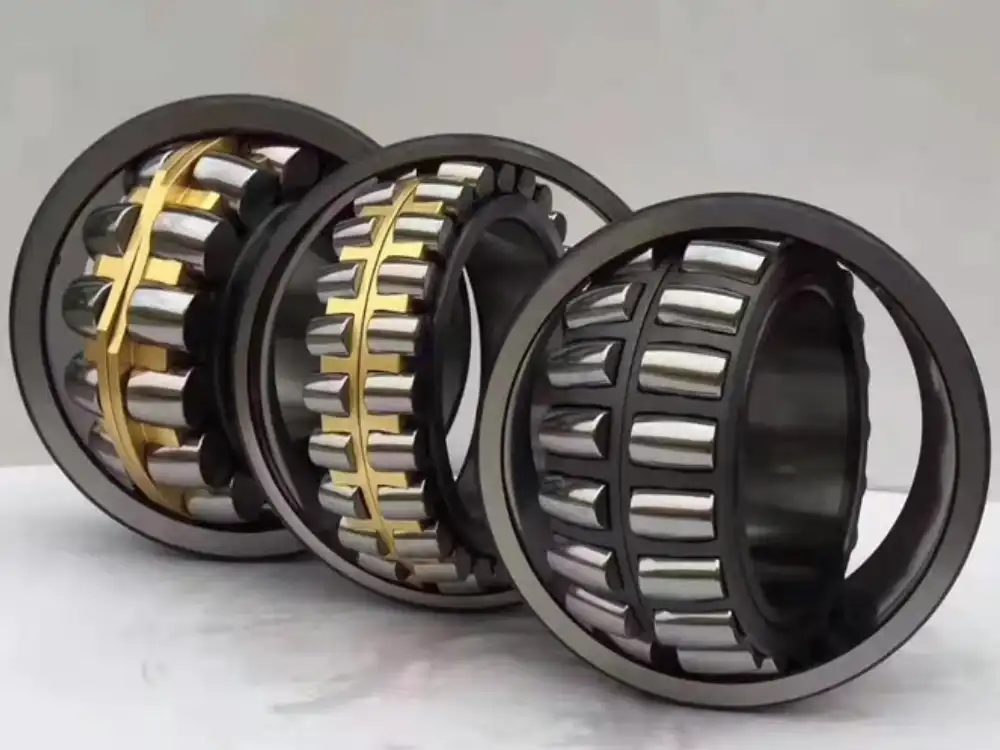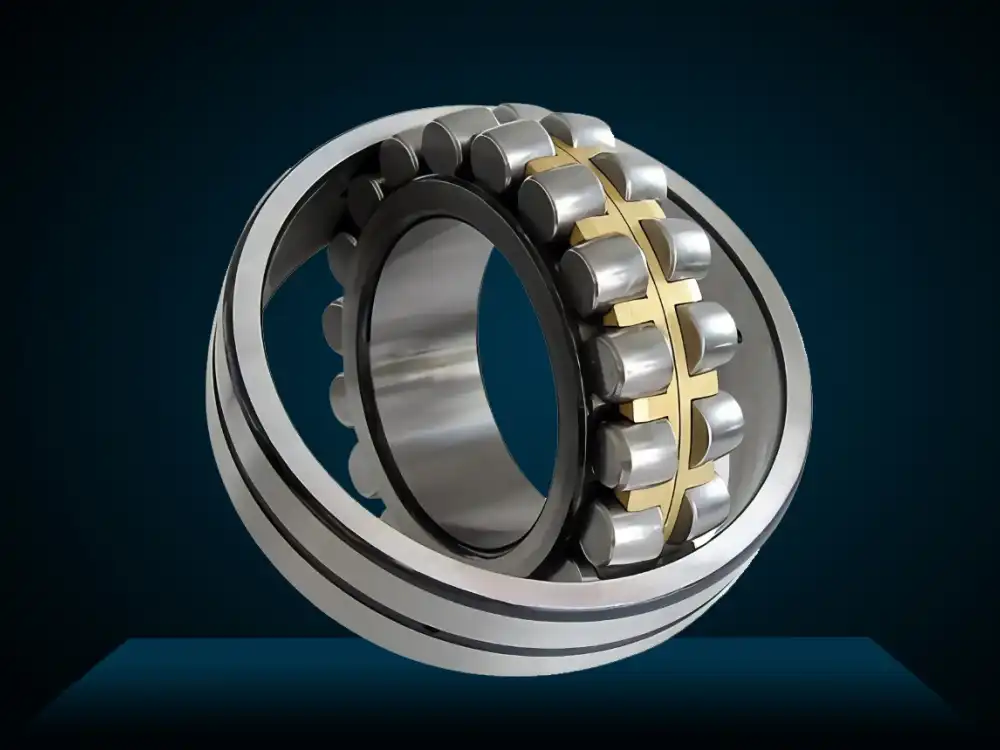How Do You Install a Self-Aligning Tapered Roller Bearing?
Installing self-aligning tapered roller bearings requires precision and care. These specialized bearings combine high load-carrying capacity with self-aligning capabilities to accommodate misalignment and shaft deflection. This guide covers essential steps, common challenges, and best practices for properly installing these bearings to ensure maximum service life and operational efficiency.
What are the preparation steps before installing a self-aligning tapered roller bearing?
Inspection of the Bearing Components

Before installation, thoroughly inspect all self-aligning tapered roller bearing components for damage, contamination, or defects. Examine the rolling elements, inner and outer rings, and cages for dents, scratches, or rust. Verify that the tapered rollers are correctly oriented for proper load distribution. The self-aligning feature, typically incorporated in the outer ring design, should move freely throughout its range of motion. Only open sealed packages immediately before installation to prevent contamination. Leave any protective coatings intact until you begin the installation process. Document any abnormalities, as these might affect performance or indicate the need for replacement.
Preparation of the Installation Environment and Tools
Create a clean, well-lit workspace free from contaminants like dust, metal chips, and moisture. Both the self-aligning tapered roller bearing and housing should be at the same temperature to prevent fit issues due to thermal expansion. Gather all necessary tools beforehand, including bearing pullers, fitting tools, induction heaters, and measurement instruments. Depending on bearing size, you may need hydraulic or mechanical presses. Calibrate thermal mounting equipment if heat-assisted mounting is required. Ensure all personnel understand the installation procedure and safety protocols, particularly when handling heated components or operating hydraulic equipment. Have proper protective equipment available when working with heated self-aligning tapered roller bearings.
Verifying Shaft and Housing Dimensions
Before proceeding, measure and verify that all dimensions meet manufacturer specifications. Check the shaft diameter at multiple points using micrometers to ensure consistency and identify any irregularities. Measure the housing bore for dimensional accuracy and geometric form. Tolerance classes for both shaft and housing must match the specified fit requirements for the self-aligning tapered roller bearing. Surface finish is equally important; excessive roughness can impede proper seating while too smooth a finish may not provide adequate friction for certain mounting methods. Pay particular attention to shoulders, fillets, and transition areas where the bearing will seat. Document these measurements for future reference during maintenance.
How can you properly mount a self-aligning tapered roller bearing onto a shaft?
Cold Mounting Techniques for Smaller Bearings
Cold mounting works well for installing smaller self-aligning tapered roller bearings with less substantial interference fits. Apply even pressure directly to the bearing face that will seat against the shaft shoulder, using appropriate mounting tools like tubular drift or a press. Never hammer directly on the bearing as this can damage precision components. For interference fits, use a mechanical or hydraulic press with correct adapters to ensure even force distribution. Press the bearing on slowly and steadily while maintaining proper alignment. If resistance becomes excessive, stop and reassess rather than increasing force. For bearings with separable components, mount the inner ring first, followed by the cage assembly and outer ring according to manufacturer guidelines. After mounting, verify that the self-aligning tapered roller bearing rotates freely within its self-aligning range.

Heat Mounting Methods for Interference Fits
Heat mounting is preferred for medium to large self-aligning tapered roller bearings with significant interference fits. This method temporarily expands the bearing's inner ring through controlled heating, making installation easier and reducing damage risk. Heat the bearing uniformly to temperatures typically between 80°C and 120°C (176°F and 248°F), depending on bearing size and material. Never exceed 125°C (257°F) unless specifically recommended by the manufacturer. Use induction heaters for consistent, controlled heating without contamination risks. Once heated, quickly transfer the bearing to the shaft and position it against the shoulder before cooling causes contraction. Use heat-resistant gloves during this process. Allow the assembly to cool completely to ambient temperature before proceeding with further installation steps or applying loads to the bearing.
Ensuring Proper Alignment and Seating
Although self-aligning tapered roller bearings accommodate some misalignment, they still require proper initial positioning. Ensure the bearing is square to the shaft axis as it engages with the shaft. Use dial indicators to monitor the position and detect any cocking or skewing during installation. The bearing should seat firmly against the shaft shoulder or spacer without gaps. After mounting, verify that the inner ring cannot be moved axially relative to the shaft. Test the self-aligning function through its intended range of motion to confirm smooth operation without binding. For bearings with preload requirements, follow manufacturer specifications for achieving the correct preload. If using shims or spacers, verify their dimensions and condition before installation. Document the final position, any measurements, and methods used to achieve proper alignment for future reference.
What are the common mistakes to avoid when installing self-aligning tapered roller bearings?

Improper Handling and Contamination Issues
Even microscopic particles can significantly reduce the life and performance of self-aligning tapered roller bearings. Keep bearings in their protective packaging until immediately before installation. Handle bearings with clean, dry hands or wear lint-free gloves. Ensure the installation area is clean and free from dust, metal chips, and contaminants. Clean all tools thoroughly before use. Avoid placing bearings on absorbent materials that might introduce fibers. If cleaning is necessary, use only manufacturer-approved solvents and ensure the bearing is completely dry before installation. Be especially cautious with the precision surfaces of tapered rollers and raceways. Never blow compressed air directly at an exposed bearing. If the bearing must be set down during installation, place it on a clean, hard, non-absorbent surface.
Incorrect Force Application and Mounting Pressure
Never strike a self-aligning tapered roller bearing directly with a hammer or similar tool, as this can damage raceways or rolling elements. Apply force only to the ring being fitted, never through the rolling elements. When mounting a bearing with an interference fit, ensure pressure is applied evenly across the face of the ring being installed. Use proper mounting tools such as a hydraulic press with appropriate adapters. Watch for signs of binding or sudden increases in resistance, which may indicate misalignment or obstruction. If excessive force seems necessary, stop and investigate rather than increasing pressure. For larger bearings, use lifting equipment to avoid mishandling due to their weight. When using heat mounting, avoid applying unnecessary force as thermal expansion should do most of the work.
Neglecting Proper Lubrication Requirements
Self-aligning tapered roller bearings require appropriate lubrication from the moment they first rotate. Verify the type and quantity of lubricant recommended by the manufacturer for your specific application conditions. When applying grease, ensure it is worked thoroughly between the tapered rollers and raceways, but avoid over-packing. For oil lubrication systems, verify that oil channels and distribution systems are clean and functioning correctly. Consider the bearing's orientation in relation to lubrication points to ensure proper lubricant flow to all critical surfaces. If the bearing has been stored for an extended period, replace the original lubricant. During run-in periods after installation, monitor operating temperatures closely. Establish a relubrication schedule based on manufacturer recommendations and operating conditions.
Conclusion
Installing self-aligning tapered roller bearings requires precision, proper preparation, and adherence to best practices. By carefully inspecting components, preparing the installation environment, verifying dimensions, using appropriate mounting techniques, ensuring proper alignment, and avoiding common mistakes, you can maximize bearing performance and service life. These specialized bearings offer unique advantages when correctly installed, providing reliable operation even under challenging misalignment conditions.
Luoyang Huigong Bearing Technology Co., Ltd. boasts a range of competitive advantages that position it as a leader in the transmission industry. Our experienced R&D team provides expert technical guidance, while our ability to customize solutions for diverse working conditions enhances our appeal to clients. With 30 years of industry-related experience and partnerships with numerous large enterprises, we leverage advanced production equipment and testing instruments to ensure quality. Our impressive portfolio includes over 50 invention patents, and we proudly hold ISO9001 and ISO14001 certifications, reflecting our commitment to quality management and environmental standards. Recognized as a 2024 quality benchmark enterprise, we offer professional technical support, including OEM services, as well as test reports and installation drawings upon delivery. Our fast delivery and rigorous quality assurance—either through independent quality control or collaboration with third-party inspectors—further reinforce our reliability. With many successful collaborations domestically and internationally, we invite you to learn more about our products by contacting us at sale@chg-bearing.com or calling our hotline at +86-0379-65793878.
References
1. Smith, J.T., & Johnson, R.K. (2023). Advanced Bearing Installation Techniques for Industrial Applications. Journal of Mechanical Engineering, 45(3), 212-228.
2. Thompson, M.L. (2024). Self-Aligning Tapered Roller Bearings: Design Principles and Application Guidelines. International Journal of Bearing Technology, 18(2), 145-163.
3. Williams, P.A., & Davis, C.R. (2022). Thermal Mounting Methods for Precision Bearings in Heavy Machinery. Industrial Maintenance & Plant Operation, 37(4), 78-92.
4. Chen, H., & Zhang, L. (2023). Comparative Analysis of Mounting Techniques for Self-Aligning Bearings in Variable Load Applications. Journal of Tribology and Surface Engineering, 29(1), 112-127.
5. Peterson, A.B., Brown, S.T., & Miller, E.J. (2024). Preventing Premature Failure in Self-Aligning Tapered Roller Bearings: A Comprehensive Approach. Reliability Engineering & System Safety, 215, 107872.
6. Roberts, D.M., & Wilson, K.L. (2023). Lubrication Requirements for Extended Bearing Life in High-Temperature Environments. Tribology International, 172, 107598.

